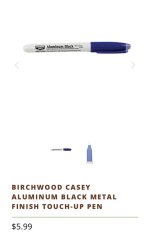Over the past few months, I have noticed a few posts where people have had issues with J frames exhibiting extreme levels of wear despite low levels of use. Some have mentioned that S&W had replaced either the frame or the entire revolver, while others wrote about how they were stuck with an unusable revolver that Smith wouldn't stand behind.
Were any of these the 4XX or 6XX series Airweight revolvers, or were these the Scandium J frames?
Are there any issues with the Airweight J frame revolvers that a potential buyer should be aware of?
As always, thanks in advance for your help!
If you have read some of my posts over the past few years you already know I don't think too highly of the current production S&W' line up. That said, I own many vintage J Frames including a Nickel "I/J Frame from the first years production (1951). It was my Dad's back up gun, his off duty gun and his "side match" gun when he served as a Fed. He literally shot 10's of thousands of rounds through the little Revolver over the 60 years he owned it. After he died, I have shot hundreds of rounds through it. Now bare in mind, almost all ammo was standard velocity but a very few +P's have seen their way through the barrel too.
After 10's of thousands of rounds I have replaced the parts that wear such as the Hand, the Cylinder Bolt, all springs and even the Cylinder Ratchet assembly, but the frame, barrel and cylinder are still original and numbered. The barrel/cylinder gap measures 0.006" and the Cylnder locks up tight. The little Revolver now functions 100%, is still super accurate and while I no longer would opt to carry any 5 shot Revolver for SD, I would not be afraid to use it in a SD situation if that is what I had.
There was also an article written by Skeeter Skelton that I read in one of the gun rags 40 years ago where he states he had fired 1000 rounds of +P through a new at the time J frame and there was not any detrimental wear to the gun. It was a torture test of the often knocked J Frame that turned out to be more hype and BS than reality.
So if there is any reality to premature wear and tear with proper ammo used in one, I am truly not aware of it. NOW..... obviously a lightweight Aluminum Alloy gun WILL wear at a faster rate than a steel one (in the same configuration) but there are very few who dare shoot hot +P loads or Magnums through J Frames too often due to the "hurt" factor.

My
other J Frames that were made in the 1960's, 70's, 80's and 90's have all been shot extensively and I have not replaced any parts due to wear. So can I say that J Frames wear "prematurely"? Not really. Will they wear faster than a K, L or N frame..... absolutely.

